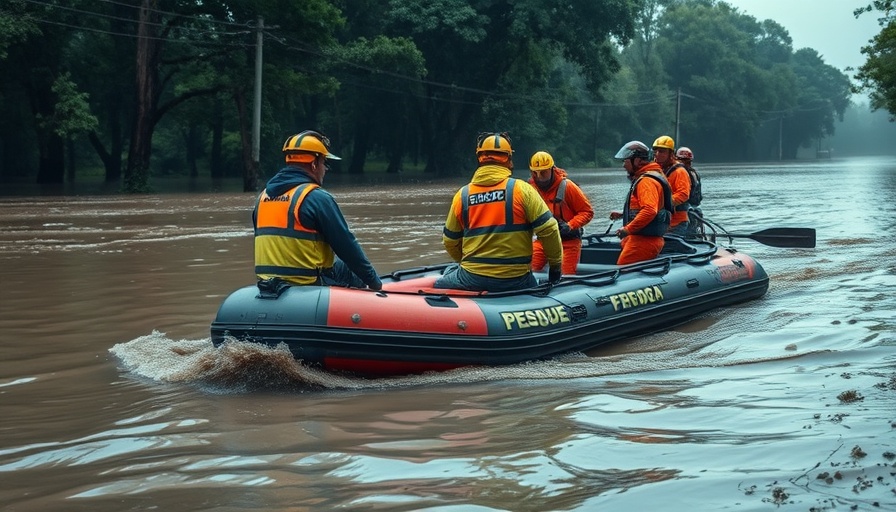
Understanding the Tragedy: Flash Floods and Their Aftermath
The Fourth of July holiday, typically a time for celebration in the United States, turned tragic in central Texas when sudden flash floods resulted in the deaths of at least 27 individuals, including nine children, and left many others stranded. Recent meteorological predictions indicated the potential for severe weather, leading to over 850 rescues by officials. As rescue efforts are in full swing, the community continues to grapple with the ramifications of the flooding, including a dire search for missing campers who were at a nearby Christian girls’ camp.
The Role of the National Weather Service
In the wake of this disaster, the National Weather Service (NWS) has come under scrutiny, with some local officials and pundits arguing that forecast shortcomings contributed to the devastation. However, meteorologists assert that the NWS accurately communicated the risk of flooding and could not have accurately predicted the storm's unprecedented intensity. Tropical Storm Barry's landfall in Mexico set the stage for unusual moisture conditions contributing to the extreme weather, which officials argue caught them off guard despite prior warnings.
Forecasting Challenges: The Meteorological Perspective
Forecasting flash floods poses unique challenges for meteorologists. Predicting how much rain will fall in a specific area during intense thunderstorms is notoriously difficult, a fact emphasized by experts including Chris Vagasky, a certified digital meteorologist. These phenomena often occur with little warning, making it nearly impossible to predict their exact impact on local communities. As meteorologists analyze past weather patterns and utilize advanced technology to refine forecasts, the distinction between predicting rainfall and predicting its catastrophic impacts becomes critical.
Funding Challenges for the National Weather Service
Aside from the immediate tragedy, discussions have emerged about the critical need for sustainable funding for the NWS. Continued budget cuts have led to job losses, raising concerns about the agency's capacity to handle unprecedented weather events. As meteorological science evolves and technology improves, sustaining adequate resources for agencies like the NWS remains vital to enhancing public safety and ensuring timely warnings reach communities.
Broader Weather Trends and Future Predictions
This event does not exist in isolation. It is indicative of broader weather trends linked to climate change, where extreme precipitation events have become more frequent and severe across the country. Experts warn that as the climate continues to shift, predictive models must be updated and refined to provide essential information that can save lives. The issue now lies in not only responding to the immediate concerns of flooding but also in addressing the long-term strategies needed to mitigate similar future tragedies.
Connecting Community Action and Safety
In the face of such disasters, community resilience becomes vital. Local governments and organizations play essential roles in preparing for and responding to disasters. Initiatives like enhanced public safety education, community drills, and better infrastructure planning can make a substantial difference when nature strikes. Engaging communities in these discussions is imperative to foster a culture of preparedness.
As our society navigates the complexities of modern weather phenomena, the insights drawn from events like the Texas flash floods can guide future improvements in forecasting, response strategies, and community resilience. It's a reminder that while technology continues to evolve, the human element of preparedness and planning remains essential.
Conclusion: The Need for Continuous Improvement
The recent flash floods in Texas highlight critical challenges in meteorological forecasting and disaster response. As climate change intensifies weather patterns, the demand for reliable forecasting grows. It prompts us to advocate for continuous improvement in both technology and community preparedness, ensuring that we can better shield ourselves from unforeseen natural disasters in the future.
 Add Row
Add Row  Add
Add 




 Add Row
Add Row  Add
Add 

Write A Comment